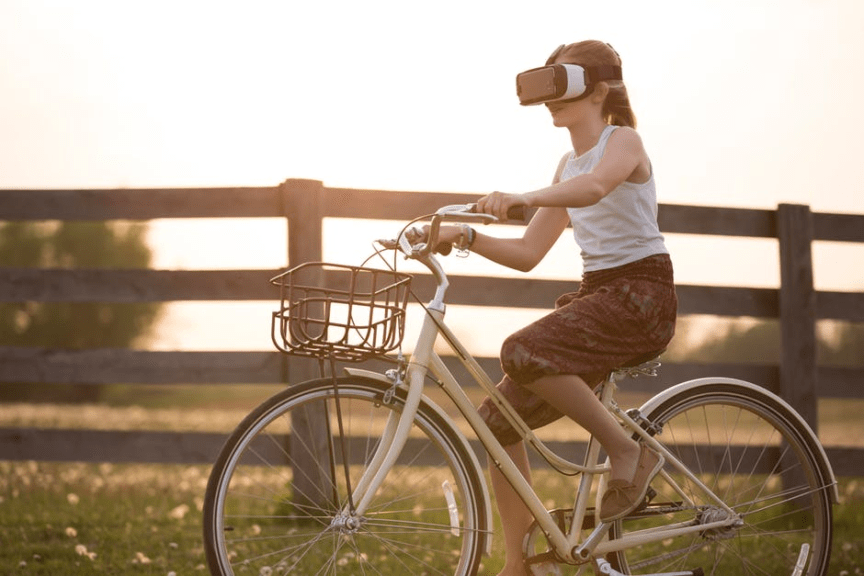How does VR Work?
The arrival of VR headsets such as the Oculus Rift, HTC Vive, and Sony’s PlayStation VR has made virtual technology available to the general public. And, as expected, the public has quickly become enamored with the newest high tech gadgets on the block and VR wares are now selling like hotcakes with the niche projected to become an enormous $120 billion market by 2021.
But it’s not actually hard to explain the public’s enthusiastic response to virtual reality technology’s arrival. Anyone who has tried the gadgets can’t help but be amazed at the immersive capability of the technology. There is just no other way to describe the experience; it is as of a magical portal has been opened and transported the used to a totally different world. The moment you don on the VR headset, ferocious dragons suddenly appear floating around as if ready to devour you or, perhaps, numerous powerful enemies will appear before you in what appears to be an ancient battleground depending on the VR world you have entered. Indeed, to the user, the VR world is just as real as the “real” world he just left behind; you can roam in it, you can look around your surroundings to see features of the terrain from different angles, and you can even interact with it.
You might even start asking yourself just want kind of magic does it take for VR to work. Scientists and engineers would assure you, however, that there is not one ounce of magic in the whole setup, just pure hard science. But the way they put all those bits and pieces of high tech stuff together to completely fool you into believing that the VR world is real can only be described as bordering on the magical.
How VR Fools Your Senses
The trick, of course, is to fool your senses into believing that a VR world does exist. For the immersive capability of VR to be unleashed, the system must first be able to create three-dimensional images that will appear life-sized from the users perspective. Being 3D constructs, the images will change depending on its virtual distance from the user and its position relative to the user. This will add depth and realism to the virtual world.
Of course, the VR system must have some way of tracking the user’s movements, particularly the head and eyes. Moving the head to the left will change the display which corresponds to a shift in perspective. As far as the user is concerned, moving his head to the left will let him see whatever objects might be to his left inside the computer-generated world.
The Hardware – Visual
To make it happen, you need one of those latest VR headsets. The purpose of those headsets is two-fold. First, their first function is to display images of the artificial world to the user. The other purpose is to block out visual input from the real world, which explains why most headsets cover the user’s eyes entirely. With visual input from the real world eliminated, the user will have no choice but to focus on the display provided by the headset, creating a more immersive experience.
VR headsets also employ an additional trick to make a person believe that the 3D world he is in is real. This is done by using a stereoscopic display. In essence, there is a slight difference between the display seen from the left eye compared to that seen by the right eye. When combined, the brain will interpret the slight difference as depth since, in the real world, there is indeed a slight difference between the images seen by the right and left eyes because they are a few inches apart.
Another way that a VR display will fool you into believing that the 3D world is real is by projecting quality images. Aside from resolution, a major factor that would affect how immersed you are in the world is the display’s frames per second (FPS) speed. Currently, Oculus Rift and HTC Vive display smoother motion because it is capable of projecting 90 FPS. Generally, the VR experience you get from mobile phones fall short when compared to the Rift and HTC Vive, but some high-end models are capable of reaching the 60 FPS mark, which is considered the minimum to be passable.
Field of view is another term you would likely encounter when talking about VR headsets. Ideally, a headset should give you with a 180-degree field of view to match a human’s field of view in the real world. However, the highest field of view is only at 110 degrees which you will get if you use Rift or Vive. Gear VR has about 96-degree FOV while Cardboard has 90. The important thing to note is that the higher field of view, the more real the visual output would be.
Movement Tracking
Movement tracking is very important in any VR setup. You will need a very responsive motion tracking system so that there will be no gap or delay between your movement and the response from the VR device. For instance, if you move your head to the left but the shift of display only happens half a second later, then it won’t feel real anymore, the lag is just too great.
For your head movement to be detected, Sony’s PS VR uses nine LED lights located around the headset which external sensor cameras can detect. On the other hand, has 20 LED lights but they are considerably less glaring compared with the PSVR. Regarding latency, you can get the best response time from Oculus Rift which is measured to be only 30 milliseconds. While different gadgets may vary, experts suggest to try getting a VR gadget with 50 ms latency or lower to eliminate lag between head movement and shift in the display.
Eye tracking is considered to be the next evolution for VR headsets. In real life, you don’t always move your head to change your perspective, you just roll your eyes to the left and right or up and down to change your focus. Unfortunately, the feature is not yet available on the current generations of Oculus Rift, PSVR, and HTC Vive headsets.
What Powers VR
You may not give it a thought, but all the cool tricks of a VR headset are only made possible because of the computing power of the processor the system uses. In this area, HTC Vive and Oculus Rift may have the advantage since they are powered by a PC. If you want them to work optimally, you can just upgrade your PC to increase its specs.
At this moment, the computing power required to unleash a truly immersive VR experience is what’s hindering mobile VR. At the moment, the computing power of smartphones just can’t compare with that of a PC. Of course, it is possible that in the near future, smartphones may become even more powerful that they will be able to provide mobile VR experience on par with PC or console based VR platforms.
Sources:
https://www.wareable.com/vr/how-does-vr-work-explained
https://www.androidauthority.com/virtual-reality-work-702049/
https://electronics.howstuffworks.com/gadgets/other-gadgets/virtual-reality.htm

